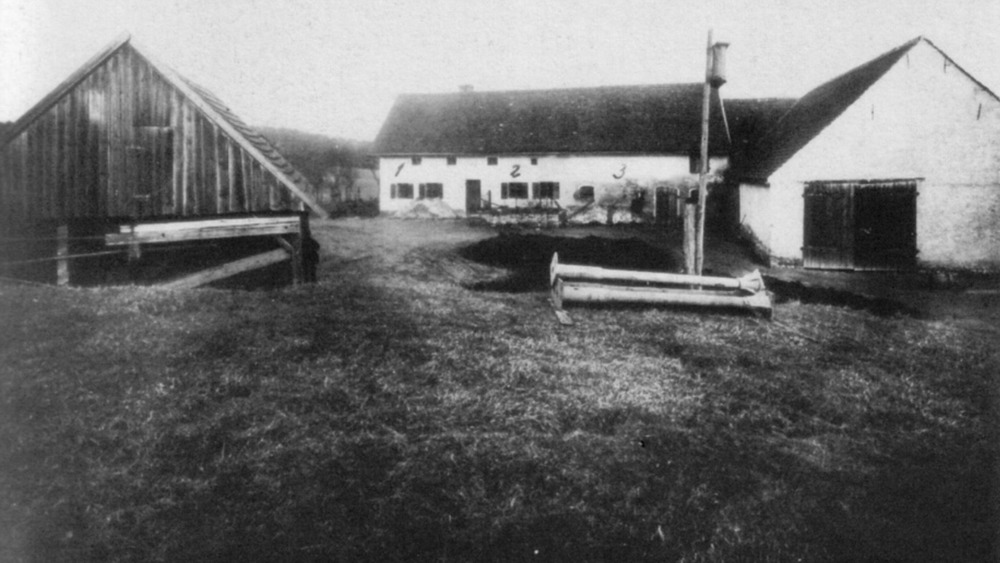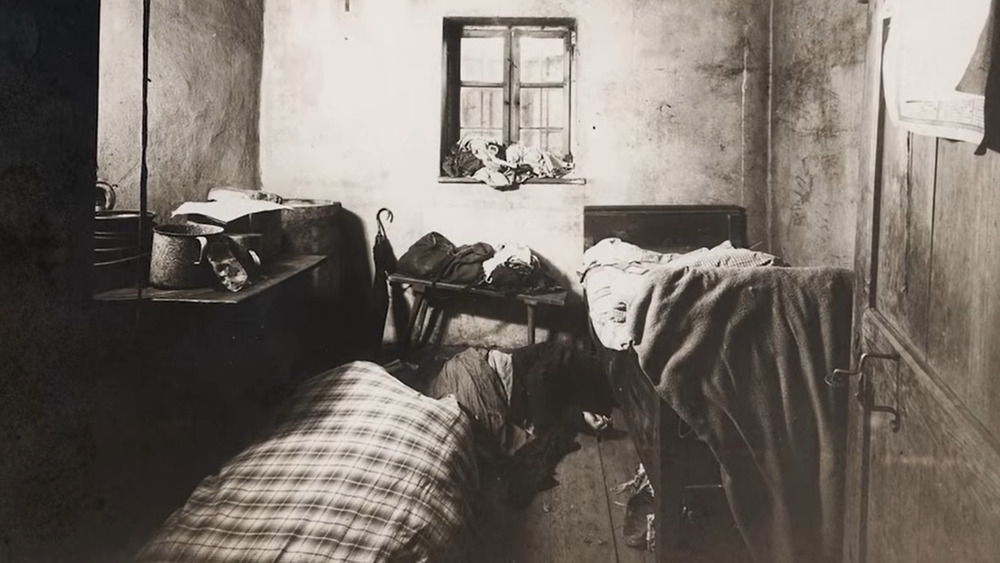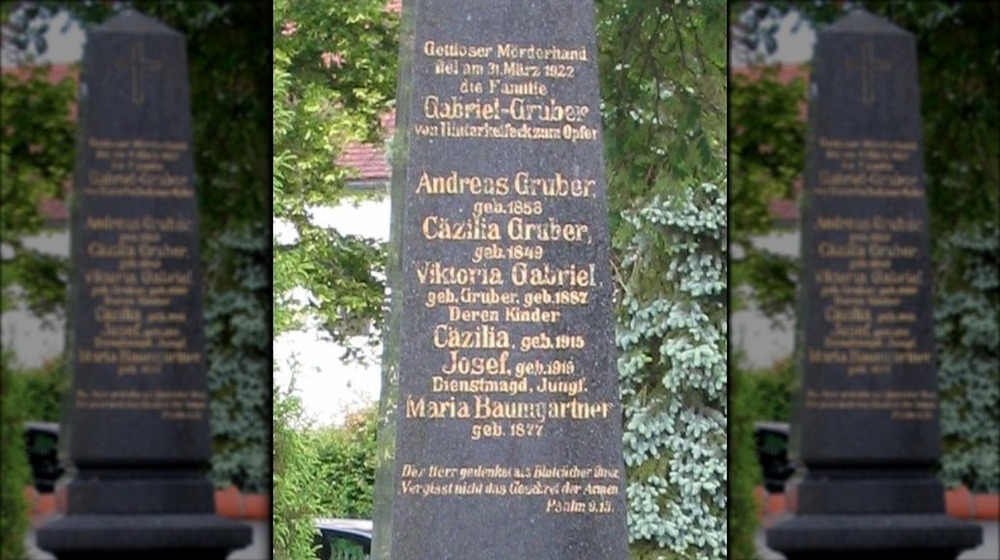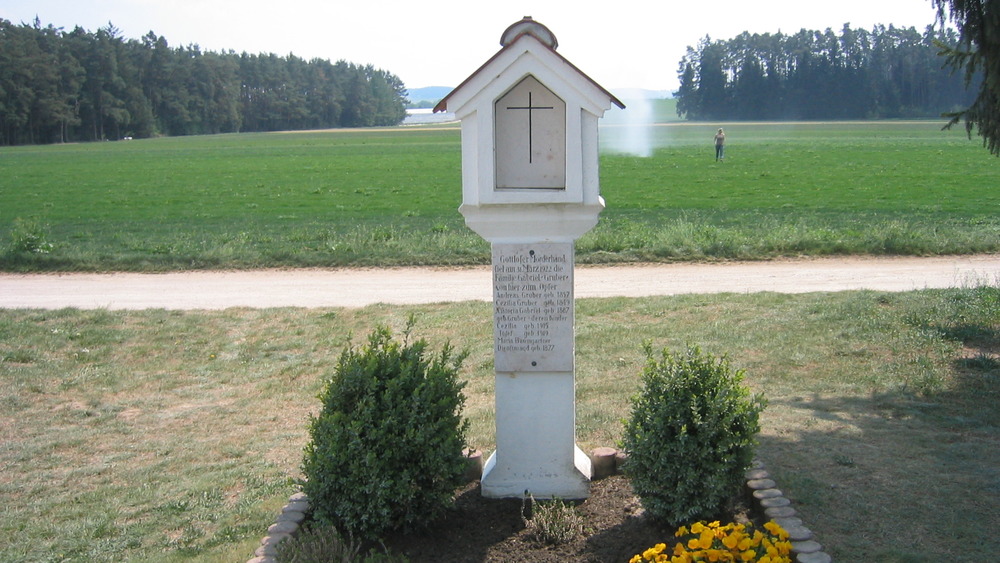The Creepy Truth About The Hinterkaifeck Murders
One of the creepiest and most famous unsolved murders in German history happened in 1922 on an isolated farmstead in Bavaria, known as Hinterkaifeck. This farm was owned by the Gruber family, which included farmer Andreas, his wife Cäzilia, their adult daughter Viktoria, and her two children, 7-year-old Cäzilia and 2-year-old Josef, as well as a maid named Maria Baumgartner. In April of 1922, the bodies of every member of the Gruber family were found slaughtered in hideous and gruesome fashion throughout the property under mysterious circumstances that have, even a century later, never been solved.
As Mental Floss explains, in the days leading up to the murders, Andreas had been noticing strange things at the farm, such as footsteps in the snow leading out of the woods toward the house and never heading back out, a newspaper in the house that he didn't remember buying, and one of the family's two house keys disappearing. While Andreas remarked on these odd occurrences to his friends, he never reported them to the police. Another strange fact that went unremarked upon until after the murders was that the Grubers' previous maid had quit six month prior due to the fact that she believed the farm was haunted. When police asked her later why she believed Hinterkaifeck had ghosts, she said it was because she kept hearing footsteps in the attic and had a constant feeling of being watched. Andreas had dismissed her concerns as superstition, much to his own detriment, it turns out.
The grisly scene at the farmstead
Despite the Gruber family's reputation for keeping to themselves, the town became concerned when the younger Cäzilia didn't come to school on April 1. Soon, the family's absence from church was noticed, as was the considerable amount of mail for them piling up at the post office. By April 4, a search party was assembled by neighboring families, led by Lorenz Schlittenbauer, a farmer who had previously had a relationship with the widowed Viktoria. What they found was a truly shocking, grisly scene, and you might want to skip the next paragraph if you don't care for those kinds of details.
According to Atlas Obscura, the elder Cäzilia had her skull cracked from multiple blows to the head, as well as bearing signs of strangulation. Andreas had blood caked all over his face, which was described as "shredded," with his cheek bones sticking out of his ragged flesh. The daughter Viktoria also had her skull shattered, with signs that her face had been hit with a blunt object. The young Cäzilia had her jaw shattered and her face and neck were covered with slashing wounds. These bodies were found in the barn covered with hay, while the maid Maria and little Josef were found inside the farmhouse, covered with sheets and a dress, respectively. The two of them seem to have died fairly quickly after a number of blows to the head and face. The tool used in the murders was likely a mattock, a pickaxe-like tool used for digging.
The desperate investigation
As Mental Floss explains, the members of the Gruber family likely all died instantly, with the exception of the 7-year-old Cäzilia. The autopsy revealed that she had lived several hours after the murders, and clumps of her own hair found in her hands suggest that she had torn out her hair in distress before dying of shock. Despite the horrifying fates of the Grubers, the search party found that the farm animals and family dog had not been harmed, and had, in fact, even been fed and tended to in the days between the murders and their discovery. Smoke had been seen coming from the chimney in those days as well, suggesting that the murderer had been living calmly at the farmstead. If the Grubers' former maid was to be believed, it's possible he had been living inside the Hinterkaifeck home for over six months.
The police initially suspected vagrants, but nothing from the farm had been stolen, with large sums of money found still within the house. Lorenz Schlittenbauer, who had been in a relationship with Viktoria and might have even been Josef's father, became a suspect, but he was cleared of suspicion when police couldn't place him at the crime scene. Most heinously, rumors arose that Andreas had fathered Josef on his own daughter, and had killed the whole family before turning the mattock on himself. However, none of the family's wounds were self-inflicted, so this theory was also dismissed.
The Hinterkaifeck case today
According to Mental Floss, the Hinterkaifeck murders had to have been perpetrated by someone familiar with farmwork, as the killer maintained the farm for days and was handy with a mattock, but not someone who lived on the Gruber farm itself. The brutal nature of the murders suggested someone with a grudge against one or more members of the family. Despite this information, police were unable to find solutions. And so the most reasonable avenue of investigation was subsequently pursued: psychics. Shortly after the autopsies of the Gruber family, their heads were removed and sent to Munich where clairvoyants were employed to seek out metaphysical clues from the Gruber family skulls. No such luck, unfortunately.
The Hinterkaifeck farm was demolished the year after the killings and the Grubers were laid to rest in a nearby cemetery ... without their heads, which were lost during the chaos of World War II. A monument stands today near where the farm used to be, memorializing the victims. Meanwhile, in 2007 the Fürstenfeldbruck Police Academy took on the Hinterkaifeck murders as a cold case, despite the degradation and loss of evidence from the original crime scene, the death of various suspects, and the relative crudity of the initial investigation. The academy was unable to conclusively solve the murder, but they did devise a theory that has been kept private out of respect for the families of those involved. As a result, the Hinterkaifeck murders remain — and might always remain — unsolved.



